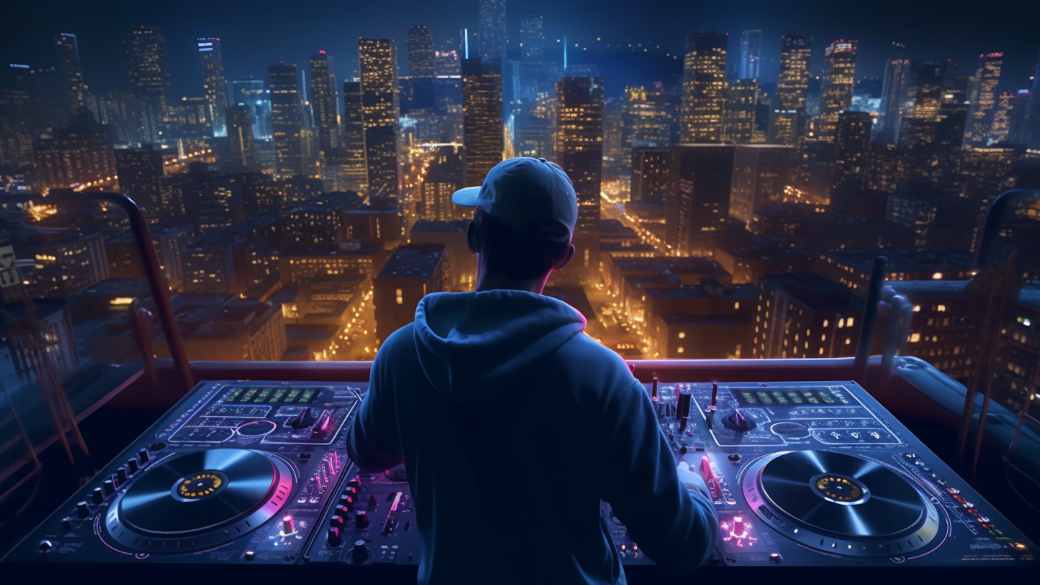
Thriving Metaverse Concert on Sound Online Platforms and 360 Video
Content
Music connects people all over the land and the world, and concerts have always been an important part of the community and the music industry business, as they allow us to experience our favorite artists live. However, with digitalization, the form and way we can experience concerts have also changed. Today we can do Online Concerts, Metaverse concerts or however you want to call them.
Metaverse concerts are no longer a new phenomenon; they are increasingly gaining importance. Whether it’s live streaming services or virtual avatars, the future possibilities for hosting online events are more diverse than ever before, especially with the inclusion of interactive features.
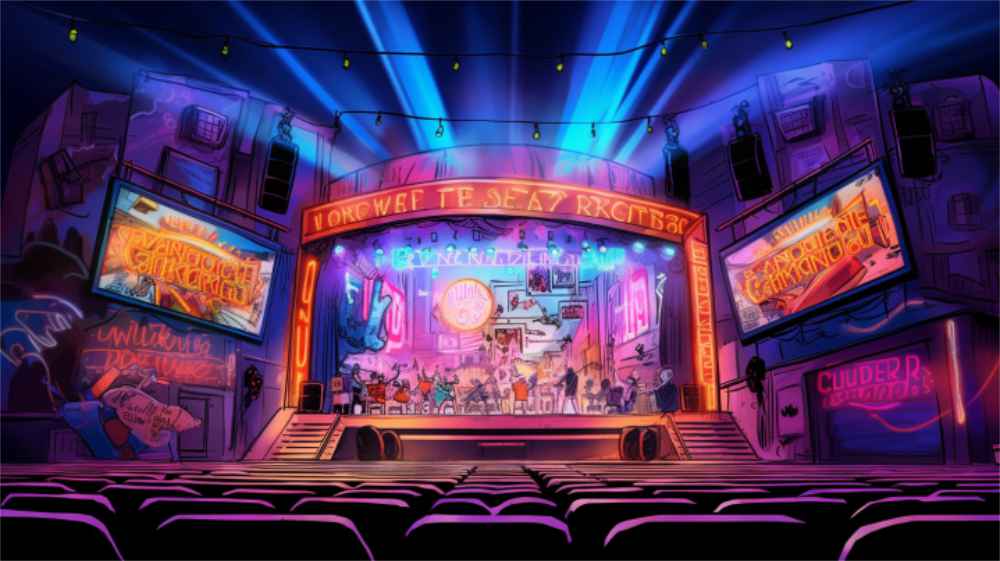
But which formats are best suited for different types of music, and which technologies are easiest to implement, allowing us to save money on the gas fee and other travel expenses and enjoy our favorite artists and other creators on the virtual real estate from the comfort and location of our homes?
In this article, we will take a look at different organizational options and provide tips on how you can enhance the audience’s experience by investing in the right format, location and technology platform. So, sit back and immerse yourself in the world of online concerts!
Based on my expert talk on metaverse concerts available on YouTube:
What are Metaverse Concerts?
Definition of Metaverse Concerts
Metaverse concerts are live or pre-recorded music performances that take place in a virtual environment, often utilizing cutting-edge virtual reality (VR) or augmented reality (AR) technology. These concerts allow artists to connect with fans in a unique and immersive way, providing an interactive experience that closely simulates a live performance.
Unlike traditional concerts, metaverse concerts can transport attendees to fantastical virtual spaces, where the only limit is the creator’s imagination. Whether it’s a floating stage in the clouds or an underwater concert hall, the possibilities are endless, making each event a one-of-a-kind experience.
Brief History of Virtual Concerts
The concept of live performances has been around for several years, but it has gained significant traction in recent times. One of the earliest and most notable examples was Marshmello’s Fortnite concert in 2019, which attracted over 10 million concurrent viewers and set a new standard for virtual events. This groundbreaking event demonstrated the potential of virtual concerts to reach massive audiences in digital spaces.
Following this success, numerous artists have embraced the virtual stage, including Travis Scott, whose “Astronomical” event in Fortnite’s rapidly expanding metaverse drew over 12 million viewers. Other major artists like Ariana Grande and Justin Bieber have also performed in various virtual environments, further solidifying the popularity and viability of live entertainment.
360 videos as a medium for live events or virtual reality real estate?
360-degree videos offer a way to experience events and concerts online. But what exactly is behind this concept? A 360-degree video allows the viewer to look around a virtual space and provides a sense of being visually present in the event. However, it’s important to note that a 360-degree video is not equivalent to the metaverse since it typically offers limited interaction during the live event.
Fortnite’s rapidly expanding metaverse has enabled innovative intersections between the music industry and virtual performances since as early as 2019. Major artists like Marshmello and Travis Scott utilized Fortnite’s metaverse for groundbreaking concerts, with Travis Scott’s record-breaking performance showcasing the possibilities of virtual concerts in new and dynamic ways.
So no, this article is not on this fancy non fungible tokens world. Where you can buy virtual land, be a sandbox land owner and play games on land that physically doesn’t exist. Rather we focus on social hubs or online community, that have assets of a concert for you alone or to sell and share with your friends.
360° camera takes – Immersion within limits
Most of us are already familiar with the concept of 360-degree videos, but what happens behind the scenes to create such a video? It’s not just a matter of pointing a 360° camera at the stage. Instead, it requires extensive production direction, good lighting, and a deliberate selection of camera settings to achieve impressive results. Typically, multiple cameras would need to be used to capture the online live event from various perspectives while maintaining an immersive experience.
There are already numerous apps offering concerts and events in 360° videos. However, upon closer examination, it often becomes apparent that these projects are merely videos produced without live characteristics, sound design, and 3D audio – essential factors for creating an immersive concert-like experience. Without these elements, the experience quickly feels unconvincing, and the illusion of being in the midst of the event is shattered.
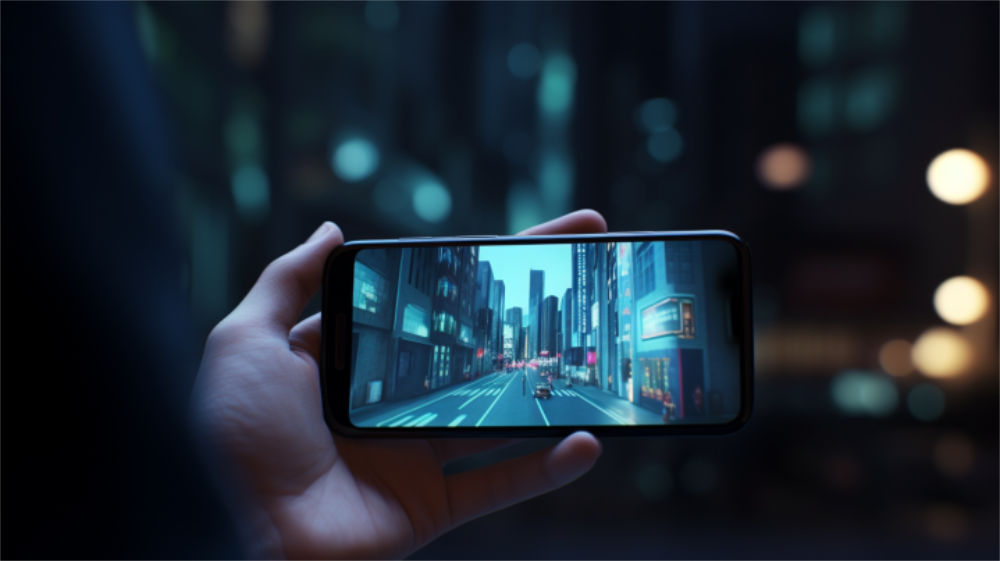
For further insights, you may find my field report on 360 video concerts in the metaverse interesting.
How can 3D audio be used in 360° online events?
The use of 3D audio offers the advantage of diving even deeper into the concert’s world and creating an immersive experience. The possibilities are limitless, ranging from special sound effects surrounding the audience to the representation of a singer approaching the listener. In a live event, the artist is usually only output through stereo speakers.
3D audio is also crucial for communication, allowing you to create a sound that goes beyond what is achievable in reality, even in the virtual worlds of conferences or meetings. Networking among guests is not only essential but also a success factor for online conferences.
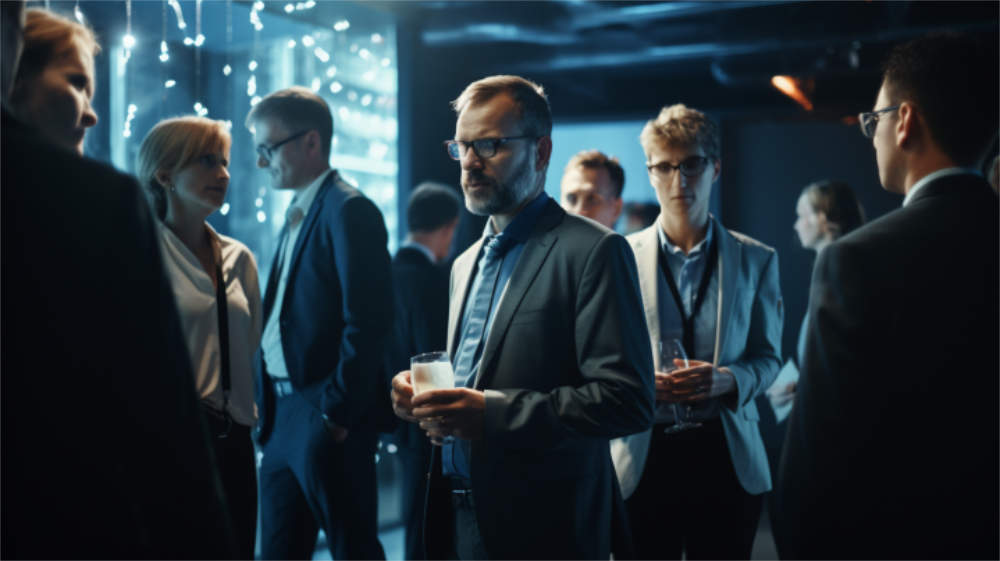
In this first section, we explored the basics and value of 360-degree videos and emphasized that creating digital live events requires more than just technology. In the next section, we will delve into the possibility and value of experiencing concerts directly in a web browser.
Live event in the web browser?
In the world of virtual concerts, there are constantly new technologies, games, and platforms promising to enhance the experience for viewers. However, when it comes to web browser solutions, the results are often poor and limited to live streams.
Metaverse events, on the other hand, offer unique advantages such as global participation and immersive digital experiences, transcending geographical limitations. Typically, an event solution such as a video streaming tool from the Vimeo server or site is used. But for planning, more data is needed.
One main problem is the sterility of the sound along with the lack of spatiality when music is played through a web browser. It can be challenging to create a room-like sound that gives the feeling of actually being in a concert hall or club, even when recording in a studio. Additionally, it’s often only possible to play mono audio, further limiting the sound quality.
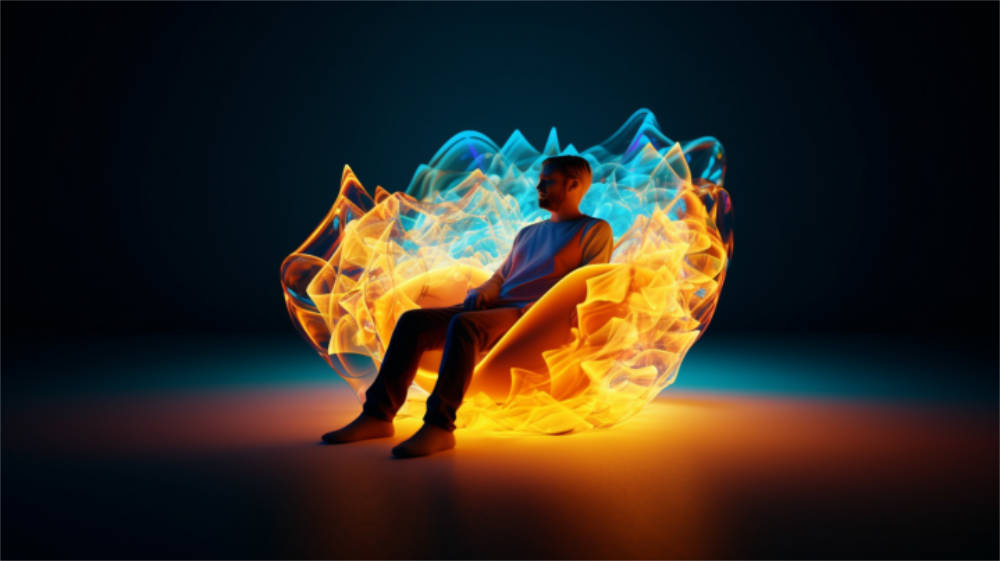
The failed EU online event
Global Gateway, an EU initiative to develop and promote music and culture in the digital space, attempted to set new standards with an interactive online experience built around live events. The idea was to create a virtual DJ stage where viewers could interact in virtual real estate full-time with the DJ and other party guests.
But the party turned out to be a flop. Despite expecting many participants, only a handful of attendees showed up. It simply played a song, lacking an immersive sound experience. Today, the Global Gateway Gala represents missed opportunities and failed goals. The main focus seemed to be on promoting their supposedly innovative project that aimed to break conventions. Read how €387,000 were burnt.
How to do it right with interactive features
But there is hope! A group of audio developers embarked on a quest for a solution and created a sandbox website platform, called experience.atmoky.com. TThis website offers us insights into a future where it might actually be possible to work excellently with sound in a web browser and create a truly three-dimensional experience.
On the website platform, you can walk through a virtual space and click on different spheres, each containing a different instrument. These spheres then generate sound played in real-time, creating an immersive listening experience. The entire experience is designed in 3D, giving you the sensation of being in a space with real instruments.
What the audio designers and creators achieved on experience.atmoky.com is an astounding example of what is possible when creators are focusing on creating a great sound experience and not settling for inferior solutions. It also shows developers that there is still plenty of room for innovation when it comes to creating experiences for concerts and other live events in the virtual world, including the integration of virtual merchandise to enhance fan engagement.
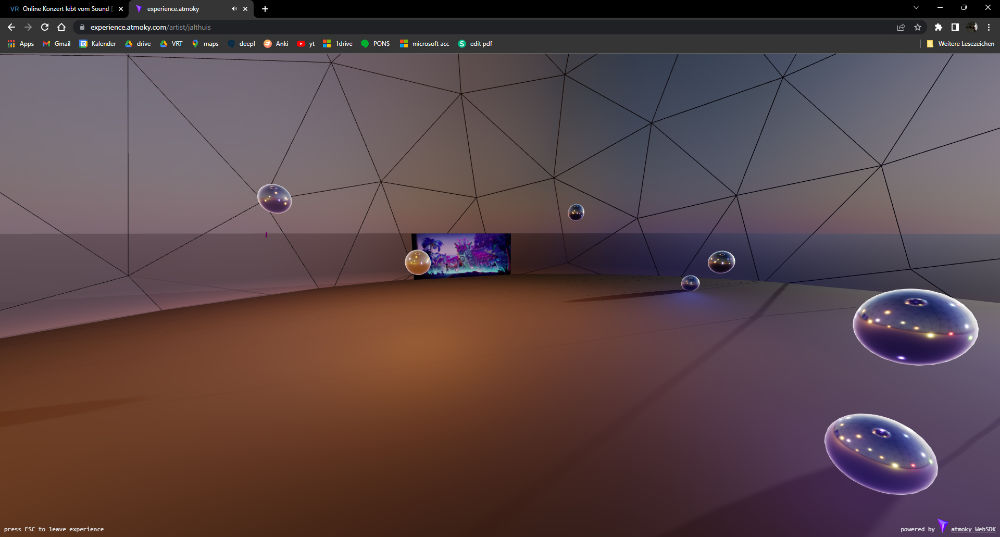
Virtual production with motion capturing
The world of virtual production is fascinating and offers countless possibilities to create, share and hopefuly sell breathtaking experiences. One technology that plays a significant role is called motion capturing.
By recording movements in real-time, digital characters and live music can come to life, not only looking realistic but also behaving more believably. In this section, we take a look at the exciting world of virtual performances and production with motion capturing and show how this technology is used to create a uniquely immersive form of events.
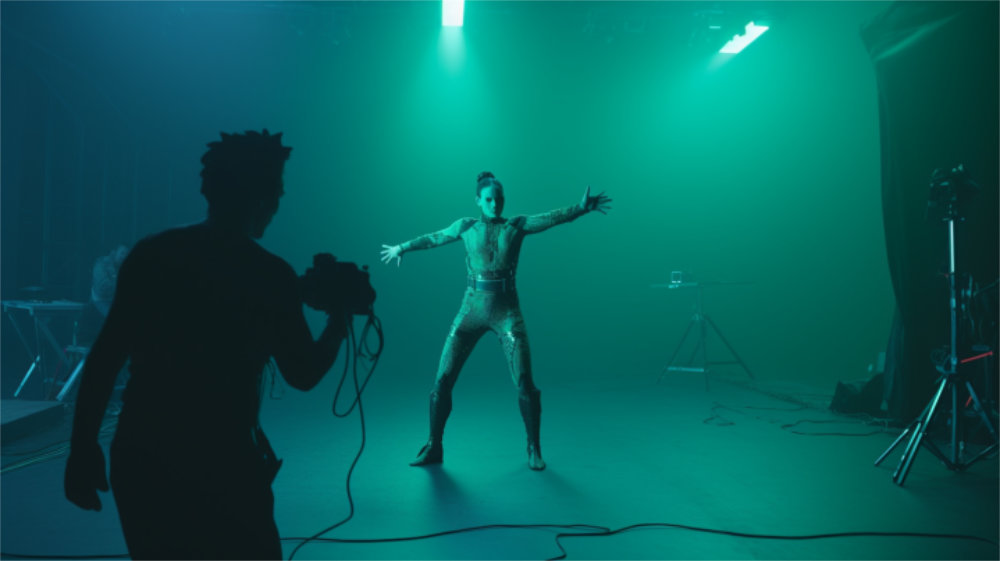
How major brands use the virtual land of the metaverse as a marketing concept
An example of how game companies utilize motion capturing and gaming technology as a marketing concept is Walmart’s online event that took place with major partners in the virtual world of the game Roblox.
In the behind-the-scenes video of the event, we see artists wearing motion capture suits and working together with game designers to create a realistic experience. However, the result was not particularly convincing.
In the recording of the online live event, we can see fans randomly standing around the artist and playing games while the music is played as playback. The atmosphere and interaction between the artist and the audience are lacking. It becomes evident that gaming technology alone is not sufficient to create a truly immersive metaverse experience for events. Even though enough ads were created beforehand.
Companies leveraging the metaverse as value for a marketing concept need to invest more in good functioning alternatives for such digital live events and seek out experts like myself. Missing aspects include interaction between creators, artists, and the audience. Only then can the full potential of such online community events be realized, even in games, and I’m here to assist. Hosting a successful virtual event in the metaverse requires addressing these challenges to enhance attendee experience and ensure event security.
Vocaloids
One particularly fascinating development in this field is the use of Vocaloids. These are computer-generated voices created through synthesizers and other technical tools. These voices are then represented by avatars projected onto a transparent screen during an online concert.
What makes these concerts so captivating is the fact that the voice and the character representing it don’t actually exist.
Everything is artificially produced and animated, making the performance a unique experience. Nevertheless, audiences celebrate and watch these concerts as if they were performed by real artists.
To ensure that the concerts don’t sound too artificial, live bands are often incorporated. This creates a sound that leans more toward live performance and avoids sounding overly produced.
It remains to be seen what new developments will emerge in this field, but one thing is certain: the future of online events looks very promising, especially when considering aspects of 3D audio and immersive media integration into online experiences.
The resurrection of 2Pac?
At the Coachella music festival in California, Tupac made a “resurrection” in 2012 as a hologram, performing alongside his former colleagues Snoop Dogg and Dr. Dre on stage.
The Tupac hologram was a technical masterpiece that garnered attention in the music industry. It appeared as if the rapper was actually standing on stage, performing some of his most well-known songs like “Hail Mary” and “2 of Amerikaz Most Wanted.” The audience reaction was enthusiastic, with many people amazed by the lifelike nature of the hologram.
While there were critics who found the hologram eerie and disrespectful, as it gave the world the impression that the deceased rapper was still alive, the majority viewed it as an impressive technological achievement that blurred the boundaries between life and death.
Taking this concept further into the digital world, combining it with aspects of 3D audio, we reach a new value that allows artists to take a form of ownership of the stage and captivate their fans even after their passing. This innovation is further exemplified by the rise of the metaverse music video, where artists like Blackpink and Snoop Dogg create immersive performances on virtual platforms like PUBG Mobile and Decentraland.
Increased accessibility and reach
Virtual concerts offer several compelling benefits, chief among them being increased accessibility and reach. With virtual concerts, fans from all over the world can attend a performance without the need for physical travel, making it possible for artists to connect with a global audience.
This is particularly advantageous for fans who may not have the means to attend a live concert due to geographical, financial, or physical constraints. Additionally, virtual concerts can be more accessible for fans with disabilities, providing an inclusive experience that traditional concerts may not always offer.
The use of virtual reality technology enhances this experience, allowing fans to interact with the artist and other attendees in real-time, creating a sense of community and engagement that transcends physical boundaries. This immersive experience, combined with the ability to reach a broader audience, makes virtual concerts a powerful tool for artists and event organizers alike.
What does a concert sound like in the virtual lands of the audio metaverse?
Online concerts can already be seen as part of the audio metaverse to some extent. They offer a promising new technology that can fundamentally change the way we experience concerts. Read how the early stages right now are not as advanced as they could be yet.
To be more relevant and successful in the long term, online concerts should continue to develop and evolve. This means, for example, integrating interactive elements and creating a unique experience that is only possible online. The creative benefit of technology should always be at the forefront to create something truly extraordinary that captivates the audience at every location and enriches all of our lives by investing in value.
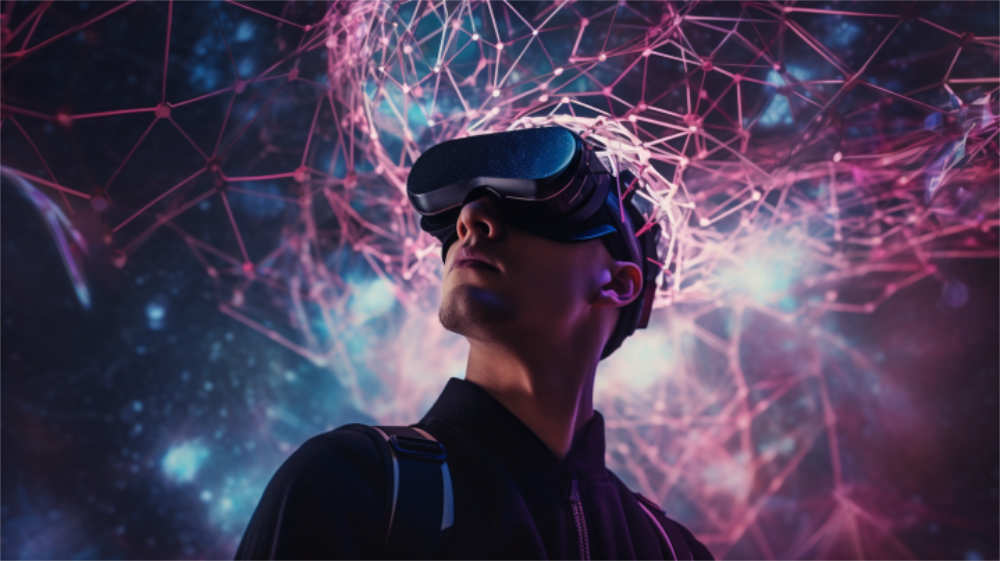
However, to fully harness the potential of such online concerts, we need to be aware that it’s not visual reality but virtual reality (VR). Sound and other sensory perceptions play an important role in creating a truly immersive experience that enriches our lives in new and exciting ways.
If you’re interested in shaping the future market side of live events or impressing your potential buyers and partners at the next trade fair, I’d be happy to assist you with a free initial consultation.
Contact me!